Dahlias are tuberous perennial plants related to mums and zinnias. They produce striking flowers in varieties called pompom, cactus, dinner plate, and many more. When do dahlias bloom? That depends on your local climate and whether the tubers can be successfully overwintered.
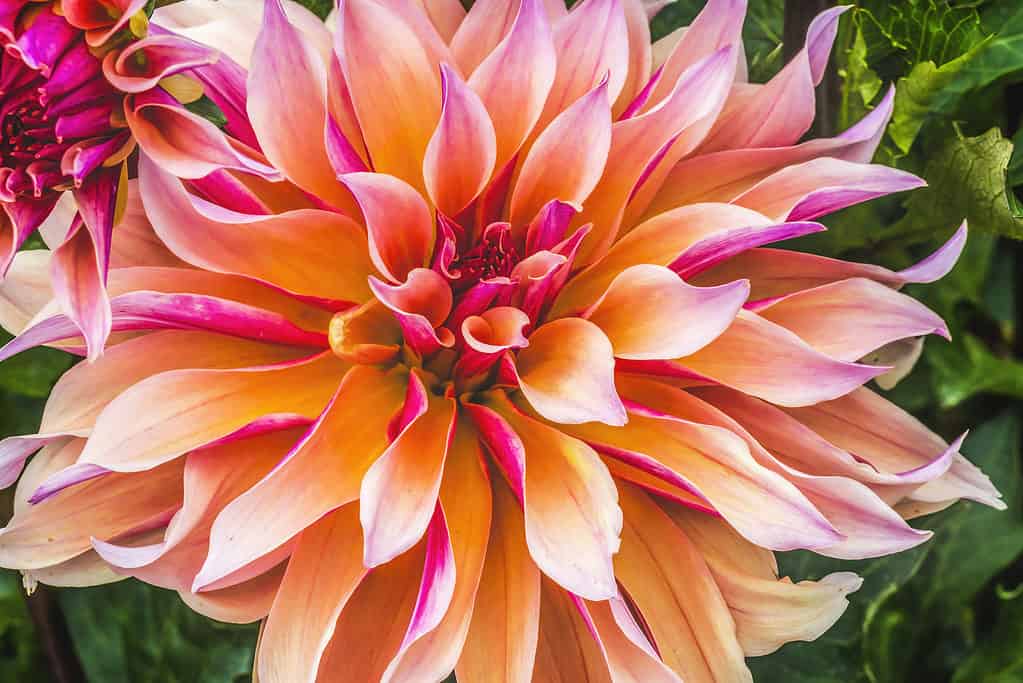
Dahlias grow from tubers and bloom in the summer and fall.
©iStock.com/bpperry
When do dahlias bloom?
Dahlias are hardiest in Zones 8–10 and bloom between summer and the first autumn frost. So, you can expect your dahlias to dazzle between July and October. Additionally, some cultivars are early bloomers that, if overwintered successfully, produce flowers as early as June.
Dahlias grow as annuals in Zones 7 and lower. However, dahlia bloom timing might differ per Zone if there are significant differences in climate between them.
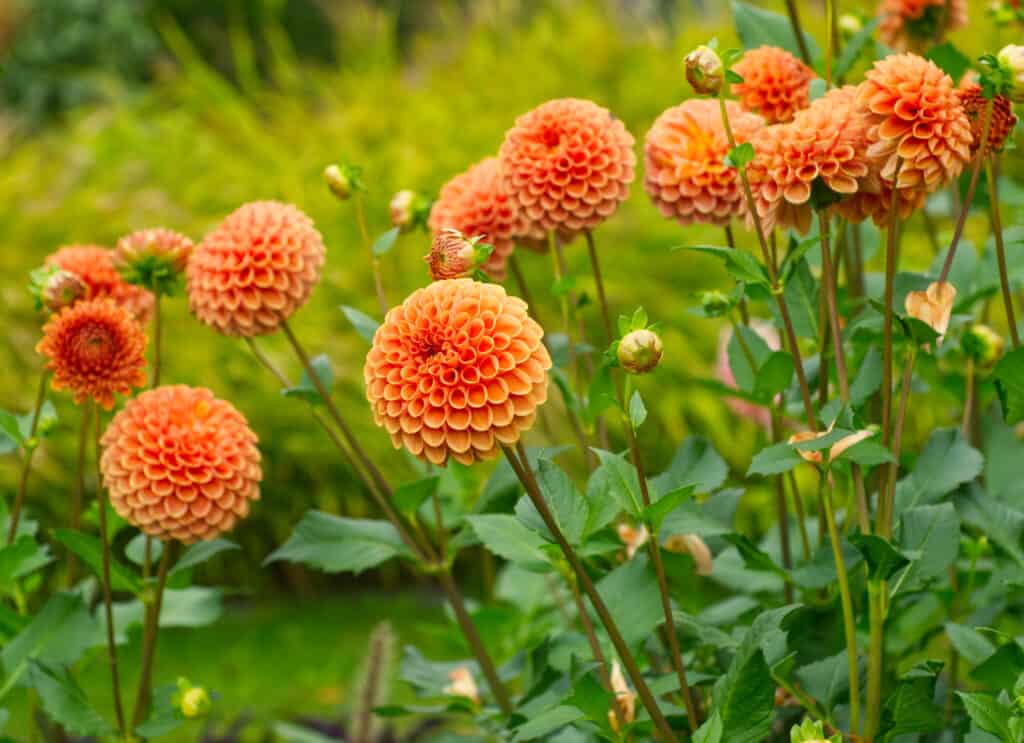
The dahlia is a perennial in Zones 8–10. In colder Zones, they grow as annual plants.
©Sve_M/Shutterstock.com
Dahlia Peak Season by Zone
The USDA Hardiness Zone map separates the United States into temperature-based Zones. These Zones are grouped by the lowest average winter temperature ranges in each area.
Knowing these temperature averages helps local growers determine which dahlias will or won’t survive through the winter.
The table below shows that the peak season for dahlias has the same general timing in each of the featured Zones. However, growers in Zones 7 and lower will grow dahlias as annuals. To do so, you can either leave dahlia tubers in the ground to die off, or you can dig up the healthiest tubers, store them inside over the winter, and replant them in the spring.
| USDA Hardiness Zones | Dahlia Peak Season | Perennial or Annual? |
|---|---|---|
| Zones 2a-2b | July–October, depending on the cultivar | Annual |
| Zones 3a-3b | July–October, depending on the cultivar | Annual |
| Zones 4a-4b | July–October, depending on the cultivar | Annual |
| Zones 5a-5b | July–October, depending on the cultivar | Annual |
| Zones 6a-6b | July–October, depending on the cultivar | Annual |
| Zones 7a-7b | July–October, depending on the cultivar | Annual |
| Zones 8a-8b | July–October, depending on the cultivar | Perennial |
| Zones 9a-9b | July–October, depending on the cultivar | Perennial |
| Zones 10a-10b | July–October, depending on the cultivar | Perennial |
| Zones 11a-11b | July–October, depending on the cultivar | Perennial |
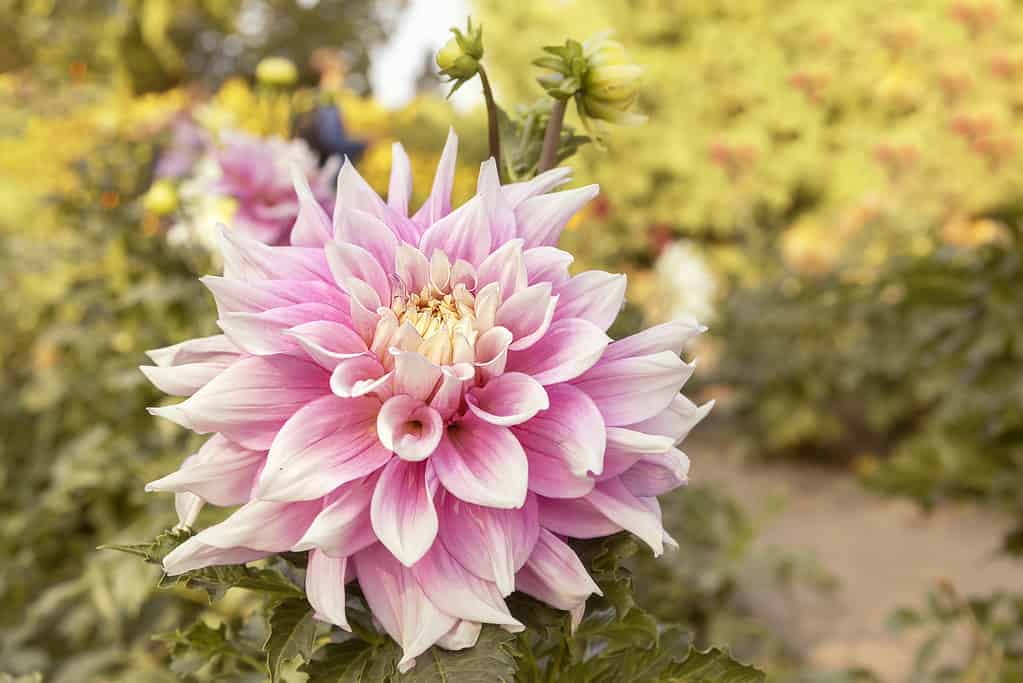
Dahlia blooms last longer on plants growing in warm temperatures between 75 and 85 degrees.
©iStock.com/GGanna
5 Reasons Why Your Dahlias Didn’t Bloom
No matter your gardening experience, you may have dahlia plants that don’t produce flowers or far fewer than expected. Why? Let’s take a look at five possible reasons your dahlia plants didn’t bloom.
Climate
Dahlia plants love warm weather but will suffer during extended periods of high heat. This aversion to high heat might seem strange since dahlias are tropical plants. However, dahlias are native to areas of Central America and Mexico where daytime temperatures reach the mid-80s Fahrenheit and decrease to the upper 60s at night. If your climate is hotter, consider planting dahlias in pots that can be moved to cooler spots in your yard or home when needed.
Sun Exposure
Dahlias need plenty of daily sun to dazzle you with more blooms. Make sure your dahlias are in a sunny spot where they receive 6–8 hours per day of direct sunlight. But, as we warned in the climate section above, ensure your dahlias aren’t spending too much time in heat above 85 degrees. During the hottest days of the year, your plants may need more afternoon shade.
Soil Quality
Quality soil is essential for the health of any plant. So, if your dahlias aren’t blooming, check your soil type and factors that can affect soil quality.
- Soil Type: Is your soil dense, packed, and holds water for long periods? That could be a problem because dahlia plants grow better in loose, well-draining soil. In addition, planting them in sandy, loose clay, or loam soil will help dahlias create beautiful blooms. Loam soil contains a mix of sand, clay, and silt.
- Soil Nutrients: Consider testing your soil for its nutrient content to determine if the nitrogen level is an issue. While new dahlias benefit from extra nitrogen to establish the plants, mature dahlias prefer a lower nitrogen content. Also, if you fertilize dahlias, use a low-nitrogen blend like 5-10-10. This type of fertilizer contains half as much nitrogen (5%) as its phosphorous (10%) and potassium (10%) content.
- Soil pH: Reduced flowering could indicate that dahlias are growing in overly acidic or alkaline soil. Ideally, dahlias should grow in soil with a pH between 6.5 and 7.0. So, test your soil pH to determine if the pH is causing the problem. You may need to amend the soil with organic matter and mulch under the plants. Other means of balancing soil pH include adding sulfur for overly alkaline soil or lime for overly acidic soil.
- Soil Toxicity: Soil testing will also help determine if toxicity is an issue for plant health. Dahlias don’t do well in soil that contains a lot of nitrogen, heavy metals, chlorine, or saline (salt). There may also be other toxins getting into your soil or water from environmental pollution.
Over Watering
Overwatered dahlia plants will produce fewer blooms. The American Dahlia Society (ADS) recommends watering when the plants have received less than an inch of rainfall over seven days. In other words, give garden dahlias 1 inch of water per week if they aren’t getting any rain.
Potted dahlias will need more water to thrive. A good practice with potted dahlias is to water the base of the plant until the soil is moist, then water again when the soil has nearly dried out.
Plant Maintenance
Without proper deadheading and pruning, dahlia plants might underproduce. So, you’ll want to remove the dead or dying blooms from the plants as often as possible during the growing season.
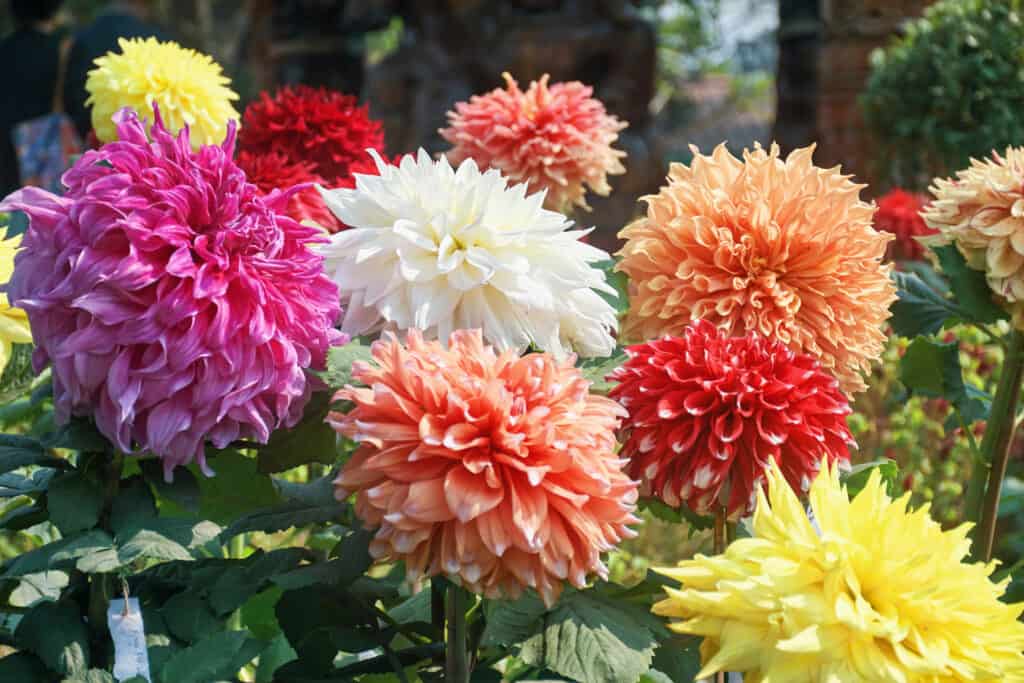
Remove spent dahlia blooms every day to help the plants bloom longer and more often.
©suprabhat/Shutterstock.com
How to Make Dahlia Plants Bloom Longer
Want to keep your dahlia blooms looking gorgeous all summer? Here are some quick tips for lasting dahlia blooms:
- Daily Deadheading: Remove spent blooms from dahlia plants every day during the growing season. This practice helps the plants have more energy to continuously produce new flowers.
- Fertilizing: Adding a low-nitrogen fertilizer to dahlia soil every 2-3 weeks can help plants produce stunning blooms throughout the growing season.
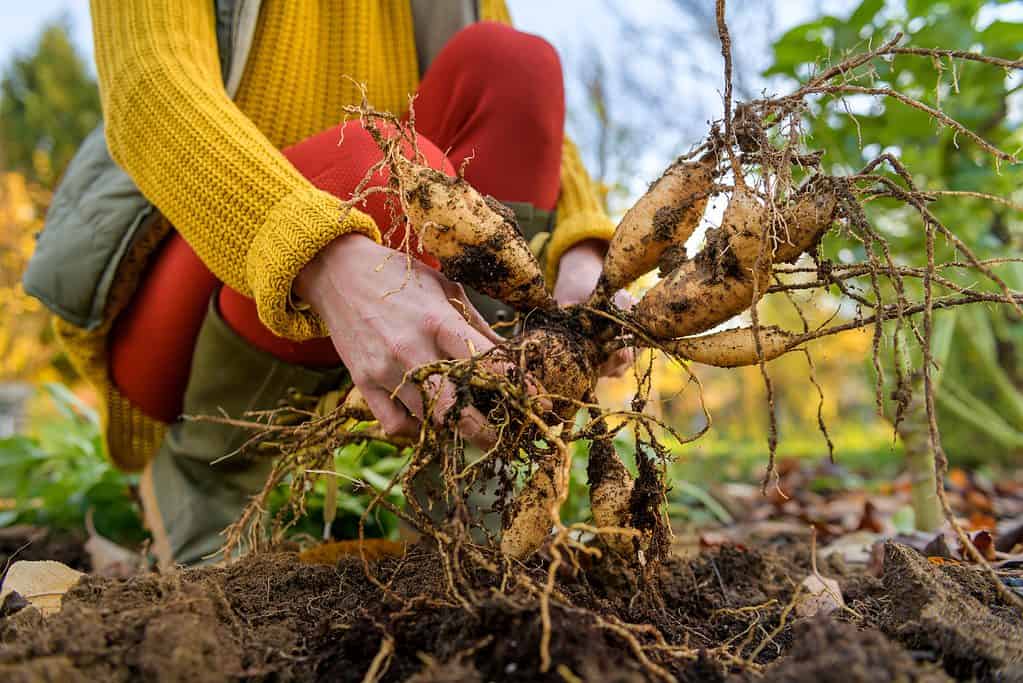
Producing long-lasting dahlia blooms begins with planting healthy dahlia tubers.
©ABO PHOTOGRAPHY/Shutterstock.com
Growing Dahlias for Long-Lasting Cut Flowers
Are you hoping to grow your own dahlias for cut flowers? If so, include in your cut flower garden the types of dahlia plants known for their long-lasting blooms. According to ADS, you can evaluate and ensure a dahlia plant’s strength as a cut flower by checking the following:
- Choose Strong Tuber-Producing Plants: Dahlia plants that produce 4-6 eye-covered tubers (dahlia bulbs) offer higher yields of blooms for cut flower arrangements.
- Dahlia Growth Habit: You want sturdy plants for sturdier flowers. Are the blooms firmly attached to the stems? The stronger, the better. Are the blooms relatively flat, or are they very full and large? Keep in mind that flowers with a lot of bloom depth typically last less time in arrangements.
- The Plant’s Bloom Quantity: How many cut-quality blooms do the dahlia plants produce per growing season? A plant’s bloom quantity (aka floriferousness) counts toward its quality as a cut flower plant.
- Timing of Flower Cutting: Dahlia flowers cut first thing in the morning or late in the evening tend to last longer in arrangements. You can also cut them after watering them since the blooms will be well hydrated.
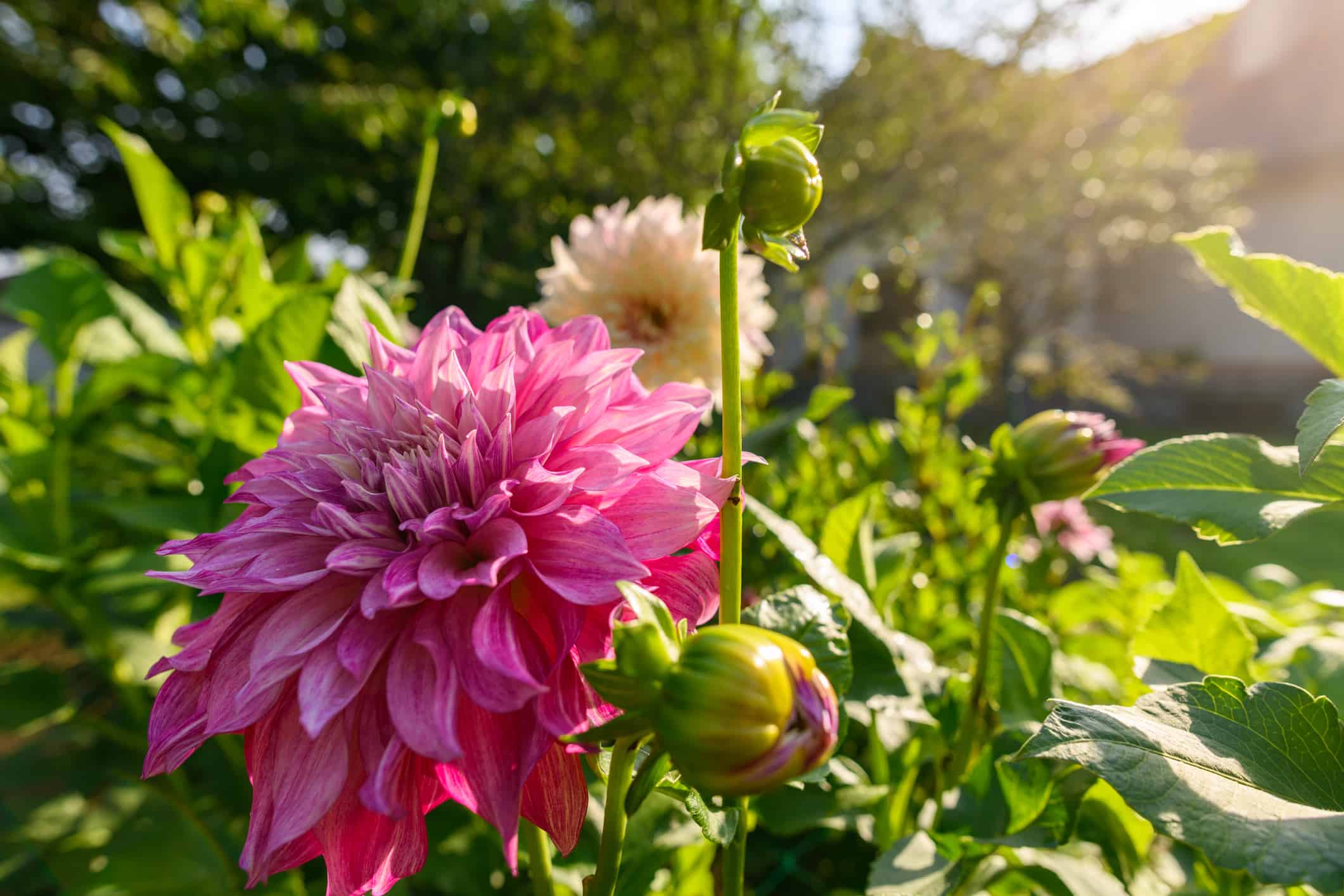
Harvest dahlias in the morning or evening for long-lasting cut flower blooms.
©iStock.com/AndreaObzerova
How to Make Cut Dahlias Last Longer
Sturdy cut dahlia flowers last about 5-7 days, but that depends on the type of plant and the cut flower’s care. For example, small dahlias (like ball types) with tightly packed and sturdy petals generally last longer as cut flowers than the bigger varieties. The largest dahlia flowers with loose petals (like dinner plate dahlias) might last only 2–3 days.
No matter the variety, ensure your cut dahlia flowers last as long as possible by doing the following:
- Harvest cut dahlia flowers in the morning or evening, not during the highest heat of midday.
- Cut the foliage off the stems, especially any part of the stem sitting in water.
- Keep cut dahlia flowers in a cool space away from direct sunlight.
- Add flower food made for cut flowers to the vase water. This support might extend the life of your cut flowers by an extra day or two.
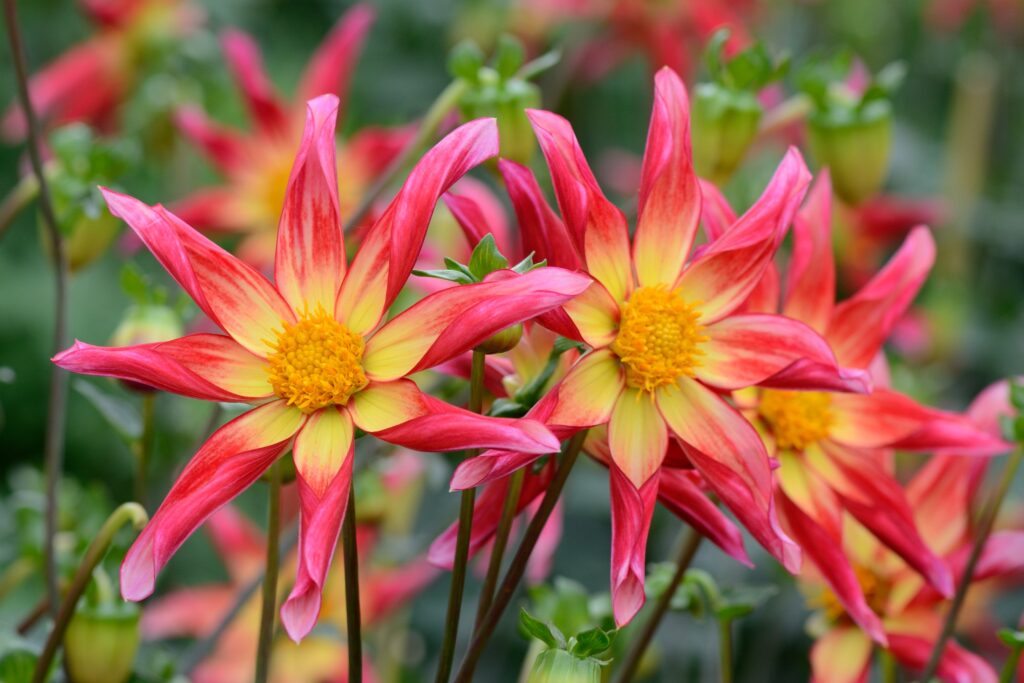
Dahlia festivals happen during peak bloom season in August and September.
©Walter Erhardt/Shutterstock.com
Peak Dahlia Season is a celebration in many states!
We’ve learned that dahlias are hardiest as perennials in Zones 8–10, where they bloom in summer and fall. But if you need more proof of when dahlias bloom in these regions, check the timing of their dahlia festivals and join in the celebration!
For example, the Annual Dahlia Festival in Canby, Oregon, happens in August and September. This festival takes place at Swan Island Dahlias, the country’s largest dahlia farm. In fact, Oregon and Washington are prime states for dahlia production, as are many southern states like Texas.
Whether enjoying a dahlia festival or growing your own plants, dahlia blooms bring a lot of color and dazzle to any gardening space. Just take great care of the plants and watch them dazzle with bold flowers until fall settles in.
The photo featured at the top of this post is © iStock.com/Billy_Fam
Thank you for reading! Have some feedback for us? Contact the AZ Animals editorial team.






